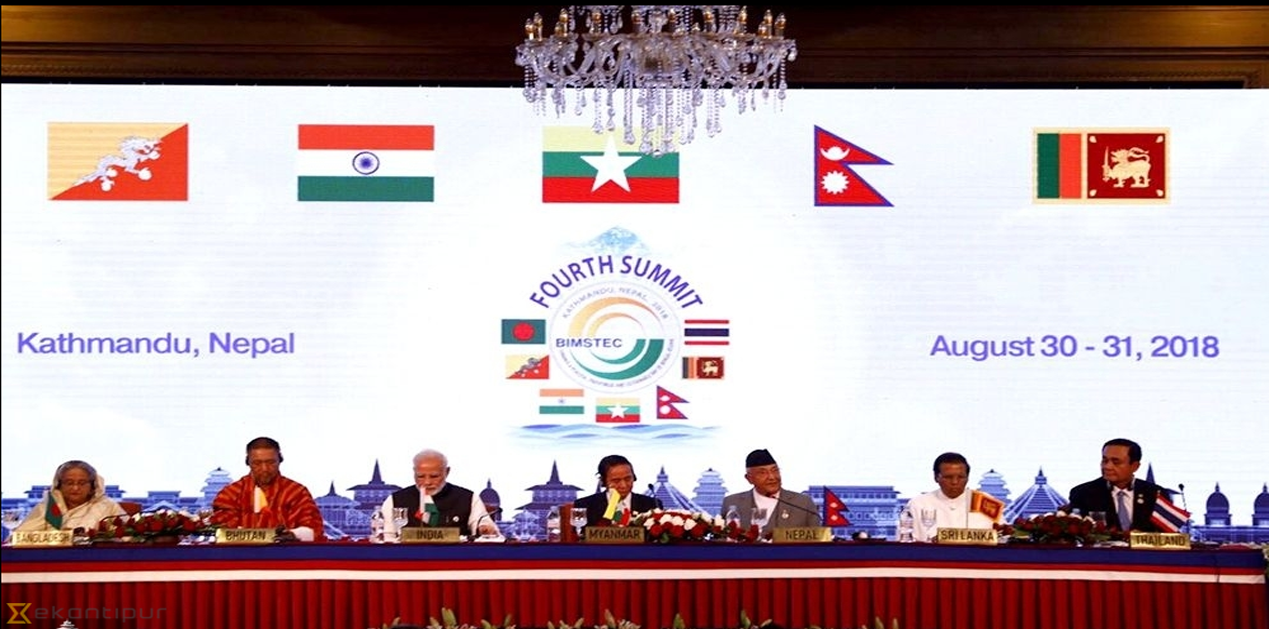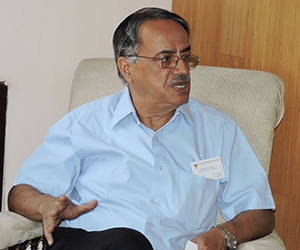Conceived and formed in 1997 at Bangkok initially as a grouping of Bay of Bengal littoral countries, the Bay of Bengal Initiative for Multi-Sectoral Technical and Economic Cooperation (BIMSTEC) grouping has expanded to include hinterland countries like Nepal and Bhutan. While it was supposed to have biennial summits, it has so far had only four. Thus, even after two decades or so of its existence, it is still a work in progress. However, in recent years, the BIMSTEC has been gaining resonance as India’s efforts to bring Pakistan on board in the South Asia Association for Regional Cooperation (SAARC) processes have not borne fruit, largely due to obtuse policies pursued by Islamabad. BIMSTEC includes almost all the SAARC nations as also Myanmar and Thailand.
BIMSTEC reflects the confluence of Indian Government’s three significant policies of ‘Development of the North East Region’, ‘Neighbourhood First’ and ‘Act East Policy’. Integrating the neighbourhood and extended neighbourhood through a network of multi-modal transport and economic corridors, and seeking mutually beneficial partnerships on economic, technical and strategic fronts in order to widen India’s development options has been the leitmotif of India’s regional cooperative efforts. BIMSTEC also compliments Thailand’s ‘Look West Policy’ and other member nations’ endeavours to get connected to the neighbourhood for economic development.
For cooperative efforts, BIMSTEC has over a dozen priority areas in the shape of, transport and communication, trade and investment tourism, fisheries, agriculture, cultural co-operation, environment and disaster management, public health, people-to-people contact, poverty alleviation and counter-terrorism and trans-national crimes. The Fourth Summit of BIMSTEC at Kathmandu aimed to push the agenda in the priority sectors. PM Modi in his inaugural address underlined the need for all kinds of connectivity - trade, economic, transport, digital and people-to-people connectivity. He also observed that India has operationalised its National Knowledge Network in Sri Lanka, Bangladesh, Bhutan and Nepal, and plans to extended to that to Myanmar and beyond.
One of the most significant announcements by PM Modi during his address was that India will host an International Buddhist Conclave in August 2020. This will be part of encouraging and reinforcing cultural and civilisational links among the BIMSTEC nations. The number of scholarships and training courses, technical cooperation, tourism, environment, disaster management, renewable energy, agriculture, trade etc. have also been increased. India has also decided to establish a Centre of Bay of Bengal Studies at Nalanda University for research on maritime laws and other subjects.
The Kathmandu Declaration issued after the conclusion of the 4th BIMSTEC Summit has underlined its unique position as a bridge between South and South East Asia, thus emphasising the need for further strengthening of this bridge. Terrorism in all its forms and manifestations came in for strong condemnation by all the members. Cross-border terrorism and financing of terror groups also found mention. It needs to be remembered that the last SAARC Summit was shelved because of Pakistan sponsored terrorism. All the BIMSTEC countries have witnessed incidence of terrorism and radicalism to a greater or lesser degree thus compelling them to forge cooperation in this area. Thus, it was in 2004 that Countering Terrorism and Transnational Crime (CTTC) was adopted as an area of cooperation following the first BIMSTEC Summit. A multilateral platform has been set up as a Joint Working Group (JWG) with India as the lead country for cooperation in the sector of CTTC. Further, BIMSTEC cooperation under CTTC has been divided into four sub-groups with lead shepherds - Intelligence Sharing (Sri Lanka); Combating Financing of Terrorism (Thailand), Legal and Law Enforcement Issues (India) and Prevention of Illicit Trafficking in Narcotics Drugs, Psychotropic Substances and Precursors (Myanmar). The organisation of these groups/subgroups indicates the types and nature of threats and challenges posed to the countries in the region. However, the CTCC is still evolving.
India’s connectivity efforts to the BIMSTEC region have found expression in construction and development of Trilateral Highway linking India, Myanmar and Thailand, Kaladan Multi-modal Transit Transport Project linking Kolkata Port to Sittwe Port of Myanmar and then through river and road to the Mizoram State of India. There are other road development projects for linking Manipur and Myanmar. These projects have been in the works for many years and are yet to be completed. Lack of timely delivery of developmental projects dents India’s image and credibility.
India along with its neighbours was also able to establish a sub-regional Bangladesh, Bhutan, India and Nepal (BBIN) initiative. It has four major pillars of regional cooperation in the areas of trade, connectivity and transit, investment in power generation and water management sectors, cooperation in the energy area in power trade and converting national grids into a sub-regional grid, and finally increased people-to-people relations. The signing of BBIN Motor Vehicle Agreement (BBIN-MVA) in June 2015 has facilitated smooth movement of personnel, cargo, and vehicular traffic across the borders. This agreement is viewed as one of the key achievements of this sub-regional grouping and is a first step towards for ultimate economic integration of the sub-region. Further, BBIN initiative would also be a contributory factor towards developing our North Eastern Region and adding substance to our Act East Policy to compliment the BIMSTEC.
While India’s Sagarmala Project aims to bolster coastal shipping through the development of ports and improving hinterland connectivity, there is also a need to develop maritime connectivity in the Bay of Bengal. Though funding of projects would present some challenges, Japan has been funding a number of development projects of BIMSTEC and in India’s North East. Thus, Japan’s technological and financial support for joint projects in BIMSTEC would be of considerable help. In a way, the China initiated Bangladesh, China, India, Myanmar Economic Corridor (BCIM) competes with BIMSTEC. From Indian perspective, BIMSTEC promotes west to east connectivity that supports India’s initiatives like Mekong Ganga Cooperation, besides connectivity to South East Asia.
Insofar as trade and commerce are concerned, there is a proposal under consideration for a BIMSTEC Free Trade Agreement (FTA). India has FTA’s with ASEAN and SAARC members and it might not be difficult to come to an understanding on BIMSTEC FTA.
Finally, India needs to put in sustained efforts to realise the objectives of the BIMSTEC through a collaborative approach and by taking into account the sensitivities and expectations of the other members of the grouping. Effective implementation of India’s development projects would create a conducive climate for advancing India’s influence in such countries.
Image Source: http://assets-cdn.ekantipur.com/images/the-kathmandu-post/miscellaneous/BIMSTEC-meet-30082018042309-1000x0.png











Post new comment